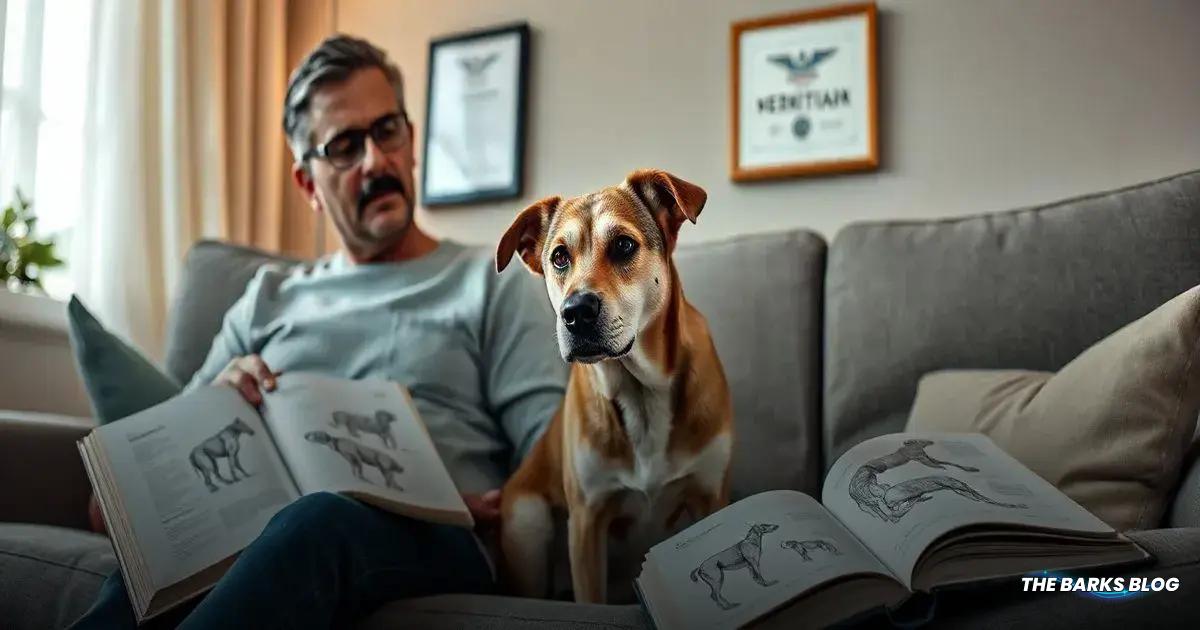Dogs cannot get hemorrhoids like humans, but they can experience rectal issues that may cause discomfort. Symptoms to watch for include dragging their rear, straining to defecate, and excessive licking. If you notice any of these signs, it’s important to consult a veterinarian for a proper diagnosis and treatment to maintain your dog’s health.
Many dog owners wonder if their furry friends can experience conditions similar to humans, like hemorrhoids. In this article, we will dive into the topic of dogs and hemorrhoids, discussing the signs and potential health issues that could arise.

Understanding Dog Piles
When it comes to understanding dog piles, it’s important to clarify that dogs cannot get hemorrhoids in the same way humans do. The anatomy of a dog is quite different; their bodies are horizontal, which means they don’t experience the same pressure on their veins that can lead to hemorrhoids in people.
Hemorrhoids in humans occur when the veins in the anus and lower rectum become swollen and irritated, often due to straining during bowel movements. In contrast, dogs typically do not face this issue because their posture and anatomy do not create the same kind of pressure. Instead, if a dog is experiencing rectal discomfort, it could be due to other conditions.
One common issue is anal gland problems. Dogs have two anal glands located near their anus that release a unique liquid when they poop. If these glands become clogged or infected, it can cause discomfort, leading to symptoms like dragging their rear on the ground, excessive licking of the area, or signs of pain when sitting.
Additionally, other rectal issues can arise, such as rectal polyps, tumors, or perianal fistulas, particularly in certain breeds. Recognizing these symptoms early is crucial, as they require veterinary attention. If you notice your dog exhibiting any signs of discomfort, it’s best to consult with your vet to determine the underlying cause and appropriate treatment.

Signs of Rectal Issues in Dogs
Recognizing the signs of rectal issues in dogs is essential for ensuring your furry friend’s health and comfort. Here are some key indicators that your dog may be experiencing discomfort:
- Dragging Their Rear: If you notice your dog dragging their rear across the floor, it could indicate irritation or discomfort in the anal area.
- Straining to Defecate: Difficulty or straining during bowel movements can be a sign of constipation or anal gland issues.
- Swollen or Red Anus: Any visible swelling, redness, or irritation around the anus should be taken seriously.
- Excessive Licking or Scratching: If your dog is licking or scratching at their rear excessively, it may be a sign of discomfort or an underlying issue.
- Blood or Pus in Stool: The presence of blood or pus in your dog’s stool or around their anus is a serious concern and requires immediate veterinary attention.
- Unusual Tail Position: A dog holding their tail in an unusual position or tucked between their legs may be experiencing pain or discomfort.
If you observe any of these signs, it’s crucial to consult with your veterinarian as soon as possible. Early detection and treatment of rectal issues can prevent more serious health problems and ensure your dog remains happy and healthy.
Conclusion
In summary, while dogs cannot get hemorrhoids like humans, they can experience various rectal issues that require attention. Understanding the signs of discomfort, such as dragging their rear, straining to defecate, or exhibiting unusual behaviors, is crucial for every dog owner.
If you notice any of these symptoms, don’t hesitate to reach out to your veterinarian for a thorough examination and appropriate treatment. Keeping an eye on your dog’s health ensures they lead a happy and comfortable life.
FAQ – Frequently Asked Questions about Dog Rectal Issues
Can dogs get hemorrhoids?
No, dogs cannot get hemorrhoids like humans do due to their horizontal body structure, which prevents the same pressure on veins.
What are the signs of rectal issues in dogs?
Signs include dragging their rear, straining to defecate, swollen or red anus, excessive licking, blood or pus in stool, and unusual tail positions.
What should I do if my dog shows signs of rectal discomfort?
If you notice any signs of rectal discomfort, consult your veterinarian as soon as possible for a proper diagnosis and treatment.
What causes anal gland issues in dogs?
Anal gland issues can occur due to clogging, infection, or inflammation, often exacerbated by obesity or lack of regular bowel movements.
Are certain dog breeds more prone to rectal issues?
Yes, some breeds, like German Shepherds and Boxers, may be more prone to specific rectal conditions such as perianal fistulas or hernias.
How can I prevent rectal issues in my dog?
Regular vet check-ups, maintaining a healthy weight, and ensuring a high-fiber diet can help prevent rectal issues in dogs.




